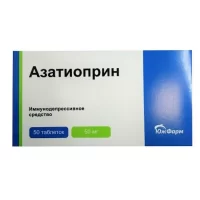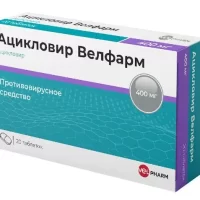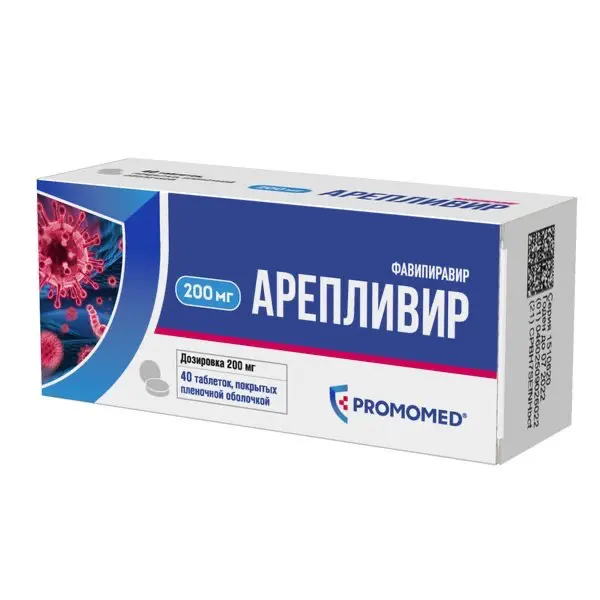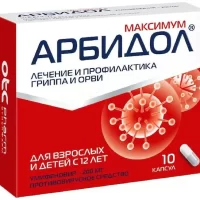Description
Valganciclovir Pharmacodynamics
Mechanism of Action.
Valganciclovir is L-valyl ether (prodrug) of ganciclovir, which is rapidly converted to ganciclovir after oral administration under the action of intestinal and hepatic esterases. Ganciclovir is a synthetic analog of 2′-deoxyguanosine, which inhibits multiplication of herpes viruses in vitro and in vivo. Human viruses susceptible to ganciclovir include cytomegalovirus (CMV), Herpes simplex types 1 and 2, human herpes virus types 6. 7 and 8 (HHV-6. HHV-7, HHV-8), Epstein-Barr virus (EBV), Varicella zoster virus, and hepatitis B virus.
In CMV-infected cells, ganciclovir is first phosphorylated to form ganciclovir monophosphate under the action of the viral protein kinase UL97. Further phosphorylation occurs under the action of cellular kinases to form ganciclovir triphosphate, which then undergoes slow intracellular metabolism. After ganciclovir disappears from the extracellular fluid, the intracellular half-life of ganciclovirtriphosphate in CMV-infected cells is 18 h; in Herpes simplex-infected cells, it is 6-24 h, respectively. Since phosphorylation of ganciclovir is highly dependent on the action of viral kinase, it occurs predominantly in infected cells.
Virostatic activity of ganciclovir is due to inhibition of viral deoxyribonucleic acid (DNA) synthesis by the following mechanisms:
– competitive inhibition of deoxyguanosine triphosphate incorporation into DNA by viral DNA polymerase;
– incorporation of ganciclovirtriphosphate into the viral DNA, leading to a cessation of elongation or very limited elongation of viral DNA. According to in vitro studies, the typical inhibitory concentration that suppresses CMV replication by 50% (IC50) ranges from 0.08 µmol/L (0.02 µg/ml) to 0.14 µmol/L (3.5 µg/ml).
The clinical antiviral effect of valganciclovir was proven by a decrease in CMV excretion from patients with acquired immunodeficiency syndrome (AIDS) and newly diagnosed CMV retinitis from an initial rate of 46% to 7% after 4 weeks of valganciclovir treatment.
Viral resistance.
Viruses resistant to ganciclovir may emerge with prolonged use of valganciclovir. This can be caused either by selective mutations in the viral kinase gene (UL97) responsible for monophosphorylation of ganciclovir or in the viral DNA polymerase gene (UL54). Mutations of the UL97 gene occur at an earlier date and are more common than mutations of the UL54 gene. A virus with only the UL97 gene mutation is only resistant to ganciclovir, with the most common substitution type mutations associated with the emergence of resistance being M460V/I, H520Q, C592G, A594V, L595S, C603W. A virus with mutations in the UL54 gene may have cross-resistance to other antiviral drugs with a similar mechanism of action, and vice versa. The development of cross-resistance to ganciclovir and cidofovir is in most cases caused by substitutions in the exonuclease domains in region V of the viral DNA polymerase. The development of cross-resistance to foscarnet is due to substitution type mutations within or between region II (codon 696-742) and III (codon 805-845) of the viral DNA polymerase.
Adults
Treatment of CMV retinitis.
Genotyping of CMV in polymorphonuclear leukocytes showed that after 3, 6, 12, and 18 months of valganciclovir treatment, UL97 mutations were detected in 2.2%, 6.5%, 12.8%, and 15.3% of leukocytes, respectively.
Prevention of CMV infection in patients after solid organ transplantation. Genotyping of CMV in polymorphonuclear leukocytes showed:
– Absence of mutations causing resistance to ganciclovir in samples obtained at day 100 (end of prophylactic valganciclovir administration) in patients taking valganciclovir and presence of mutations in samples obtained from patients taking oral ganciclovir (1.9%).
– absence of resistance mutations in samples obtained from patients with suspected CMV infection taking valganciclovir 6 months after transplantation, and presence of mutations in patients taking oral ganciclovir (6.9%).
Among patients who received valganciclovir before day 100 and before day 200 of the post-transplant period, overall replacement-type mutations were more common during prophylactic therapy than after its completion (5/12 [42%] versus 4/58 [7%].
Viral resistance may be the cause of inadequate response to therapy and persistent viral release during therapy.
Indications
Treatment of CMV retinitis in adult patients with AIDS.
Prevention of CMV infection after transplantation of solid organs in adults and children over 16 years at risk.
Contraindications
– Hypersensitivity to valganciclovir, ganciclovir or other components of the drug.
– Absolute number of neutrophils (ACN) less than 500 cells per 1 µl; number of platelets less than 25000 cells per 1 µl; concentration of hemoglobin less than 80 g/l.
– Creatinine clearance less than 10 ml/min.
– Childhood up to 16 years old (prevention of CMV infection after transplantation of solid organs in adults and children over 16 years old from the risk group).
– Pediatric age up to 18 years old (treatment of CMV retinitis in adult patients with AIDS).
– Period of breast-feeding.
Caution:
Elderly patients (safety and efficacy not established). History of hypersensitivity to acyclovir, pencyclovir or their prodrugs (valacyclovir and famciclovir, respectively), since because of the similar chemical structure of ganciclovir, acyclovir and valacyclovir, cross-sensitivity reactions to these drugs are possible.
Pregnancy and lactation:
Fertility .
In animal studies, the use of ganciclovir has caused impaired fertility. Patients who received valganciclovir to prevent CMV infection for 200 days after kidney transplantation showed inhibition of spermatogenesis (compared to an untreated control group). At approximately 6 months after discontinuation of therapy the average sperm density of the treated patients was comparable with that of the control group of patients not receiving therapy. At the same time, all treated patients with normal sperm density and 8 of 13 patients with decreased sperm density had normal sperm density at baseline after discontinuation of treatment. At follow-up in the control group, all patients with normal sperm density and 2 of 4 patients with reduced sperm density at baseline had normal sperm density after discontinuation of treatment.
Contraception in men and women
During treatment and for a minimum of 30 days after treatment with valganciclovir, women of reproductive potential should be advised to use reliable contraception. During treatment and for at least 90 days after treatment has ended, men who are sexually active should be advised to use a barrier method of contraception unless there is no risk of pregnancy in the partner.
Pregnancy
The safety of valganciclovir in human pregnancy has not been established. However, ganciclovir penetrates rapidly through the human placenta. Prescribing valganciclovir in pregnancy should be avoided unless the potential beneficial effect of treatment on the mother justifies the possible risk to the fetus. Additional studies of reproductive toxicity of valganciclovir have not been conducted due to its rapid and significant conversion to ganciclovir. In animal studies, ganciclovir has been associated with teratogenicity and reproductive toxicity.
The safety of valanciclovir during labor and delivery has not been studied.
Breastfeeding
There have been no studies of the effects of valganciclovir and ganciclovir on peri- and postnatal development, and the possibility of excretion of ganciclovir with breast milk and the development of serious adverse reactions in the infant cannot be excluded. There are no results from human studies, but animal studies show that ganciclovir is excreted with breast milk in rats. If it is necessary to use the drug during lactation, breastfeeding should be stopped.
Dosage and administration
- To avoid overdose, it is necessary to strictly follow the dosing recommendations.
- Standard dosage regimen
- Valganciclovir should be taken orally with meals. Valganciclovir is rapidly and largely metabolized to form ganciclovir. Bioavailability of ganciclovir when taking Valganciclovir is 10 times higher than when taking oral ganciclovir, so the dosing regimen of Valganciclovir described below should be strictly followed.
- Therapy for CMV retinitis
Adults
Induction therapy for CMV retinitis
In patients with active CMV retinitis the recommended dose of Valganciclovir is 900 mg (2 450 mg tablets) twice a day for 21 days. Prolonged induction therapy increases the risk of myelotoxicity. - Maintenance therapy for CMV retinitis
After a course of induction therapy or in patients with inactive CMV retinitis, the recommended dose is 900 mg (2 tablets of 450 mg) once daily. If retinitis worsens, induction therapy may be repeated. Duration of maintenance therapy is determined individually. - Prophylaxis of CMV infection after solid organ transplantation
Adults
For patients who have undergone renal transplantation, therapy with Valganciclovir should be started during first 10 days after surgery in dose of 900 mg (2 tablets of 450 mg) once a day. Therapy should be continued until day 200 of the post-transplant period.
In patients who have had transplants of other solid organs the treatment with Valganciclovir must be begun during the first 10 days after the operation in a dose of 900 mg (2 tablets of 450 mg) once a day. Therapy should be continued until the 100th day of the post-transplant period. - Special dosing instructions
Pediatric patients Therapy for CMV retinitis. - Valganciclovir is contraindicated in children under 18 years old for the treatment of CMV retinitis, since the efficiency and safety of valganciclovir administration in this age group has not been established for this indication.
Prevention of CMV infection after solid organ transplantation - Dosing regimen in children from 16 to 18 years old does not differ from dosing regimen in adults (see section “Prevention of CMV infection after transplantation of solid organs”). Valganciclovir tablets are contraindicated in children and adolescents under 16 to prevent CMV infection after transplantation of solid organs, because efficacy and safety of valganciclovir in this age group is not established.
Elderly patients. - Efficacy and safety have not been established.
Clinical studies in patients older than 65 years old have not been conducted. Because renal clearance decreases with age, in elderly patients valganciclovir should be prescribed strictly taking into account renal function parameters. - Patients with renal insufficiency
Serum creatinine concentration or creatinine clearance (CK) should be monitored carefully. Dose adjustment in adult patients is based on CK as shown in Table 2 below.
CK is calculated as a function of serum creatinine concentration using the following formula:
for men = (140 – age [years]) x (body weight [kg])/(72) x (0.011 x serum creatinine concentration [μmol/L]); for women = 0.85 x index for men.
Table 2. - CK (ml/min) Dose for induction therapy Dose for maintenance/prophylaxis
?60 900 mg 2 times daily 900 mg once daily
40-59 450 mg 2 times daily 450 mg once daily
25-39 450 mg once daily 450 mg every 2 days
10-24 450 mg every 2 days 450 mg twice a week
<10 contraindicated contraindicated
Patients on hemodialysis - In patients on hemodialysis (KC less than 10 ml/min), there are no dosing recommendations for valganciclovir. The use of valganciclovir is contraindicated in such patients.
- Patients with hepatic insufficiency.
Efficacy and safety have not been established. - Patients with severe leukopenia, neutropenia, anemia, thrombocytopenia, pancytopenia
- Severe neutropenia, anemia, thrombocytopenia, bone marrow suppression, and aplastic anemia have been reported in patients receiving valganciclovir (and ganciclovir).
- Treatment should not be started if the AFN is less than 500 cells per 1 µl or the platelet count is less than 25000 cells per 1 µl, or if the hemoglobin concentration is below 80 g/l.





